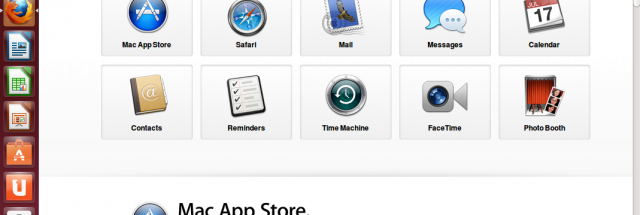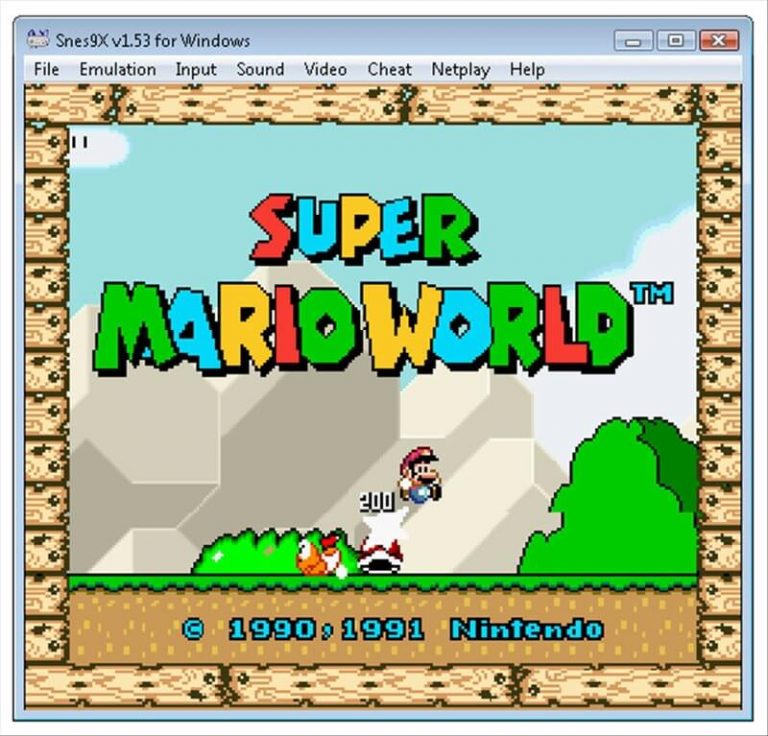
- #MAC EMULATOR FOR UBUNTU HOW TO#
- #MAC EMULATOR FOR UBUNTU MAC OS#
- #MAC EMULATOR FOR UBUNTU INSTALL#
- #MAC EMULATOR FOR UBUNTU ARCHIVE#
- #MAC EMULATOR FOR UBUNTU ISO#
Don’t worry about seedless torrents these ones are backed with web seeding.ĭevTools: I already have homebrew and XCode installed because of this I was not prompted for missing command line tools.
#MAC EMULATOR FOR UBUNTU ISO#
Cover discs can be downloaded directly as ISO files or a torrent for the ISO.
#MAC EMULATOR FOR UBUNTU ARCHIVE#
Magazines can be browsed right on the archive site, or downloaded as archives or PDFs (or a torrent containing all formats). Note that while QEMU is available in Homebrew, it does not have the experimental audio support (yet). Here is a short guide on how I got it running with MacOS High Sierra as the Host OS.
#MAC EMULATOR FOR UBUNTU MAC OS#
Yes, many people have already written about emulating Mac OS 9, but only recently (2018) did experimental audio support come out for QEMU. I recalled that QEMU could emulate other architectures, surely someone has already tried to emulate Mac OS 9. My first instinct was to reach for VirtualBox, but that is a no go as I need to emulate a Motorola 68K or IBM PowerPC architecture. I was curious to see what applications were around back then - what about emulating Classic Mac OS to see? These magazines are freely available on the Internet Archive, including their cover discs. Building websites, graphic design, hacking the appearance of the UI, all these were explained in the pages of magazines. Growing up around that time, I remember reading a lot of MacAddict and MacWorld to learn what I could do with a Mac. Issue mentioned by Bob White in the comments below.ģ.I recently got an urge to revisit old computer media from the late 90s and early 2000s. ] In case you run into an issue saying it failed to run Sosumi / qemu because it can't start X11, add your user to the kvm group: This is only required the first time an applications menu shortcut is created for future launches. Run Sosumi for the first time by typing sosumi in a terminal.

#MAC EMULATOR FOR UBUNTU INSTALL#
You can skip -edge from the command to install the stable version if you wish.Ģ. Why edge? In my test, the macOS virtual machine did not start after using the Sosumi stable package, but it does work with the edge version.

This is enabled by default in Ubuntu, and on other Linux distributions follow the instructions from the Snapcraft docs. To install Sosumi you'll need to be able to install Snap packages on your system.
#MAC EMULATOR FOR UBUNTU HOW TO#
How to install macOS in a virtual machine (QEMU) on Linux using Sosumi snap package The launch script, which contains various parameters (like the available VM memory, CPU count, etc.) that you can tweak, can be found in ~/snap/sosumi/common/launch.You can get the QEMU virtual machine to release your mouse focus by pressing CTRL + Alt + G.Both Intel and AMD CPUs are supported, but the recommendations are Ivy Bridge (or later) Core and Xeon processors, or Ryzen and Threadripper processors (from the macOS-Simple-KVM FAQ).See the KVM checklist from here to find out if your CPU supports this Your computer CPU needs to support hardware virtualization.After installing macOS in the virtual machine, the total size of the Sosumi folder ( ~/snap/sosumi) on my system is about 31,5 GB, but this can get larger as you install extra applications in the macOS virtual machine.You may also be interested in: Install macOS Big Sur Or Catalina In A Virtual Machine Using Docker-OSX Before installing this there are a few important things I want to note:
/-best-iphone-emulators-of-2018-4580594-1-5c15567b46e0fb00016e0e3e.png)
If you don't want to use the snap package though, you have the alternative of using macOS-Simple-KVM, a set of tools to set up a quick macOS virtual machine in QEMU (accelerated by KVM). You can find the snap package source on GitHub. This snap package, created by Alan Pope of Canonical / Ubuntu, makes it easy to install and run macOS in a virtual machine on Debian / Ubuntu, Fedora and other Linux distributions (after installing snapd), shipping with basically everything you need to get it running. So this may not be suitable to be used for heavy tasks, but it's perfect for testing. It's worth noting from the start that Apple doesn't allow installing macOS on non-Apple hardware, so to use this legally you must have Linux installed on Apple hardware.Īfter using Sosumi for a few hours on my Ubuntu 20.04 desktop, I can tell you that the installation takes quite a while (about 50 minutes on my system), and the macOS system may be a bit slow, but it's usable.

It does not ship with macOS, but downloads an installer image for macOS Catalina. Sosumi is a snap package based on macOS-Simple-KVM that makes it easy to download and install macOS in a virtual machine (is comes bundled with qemu-virgil, which includes virtio-vga, a paravirtual 3D graphics driver).


 0 kommentar(er)
0 kommentar(er)
